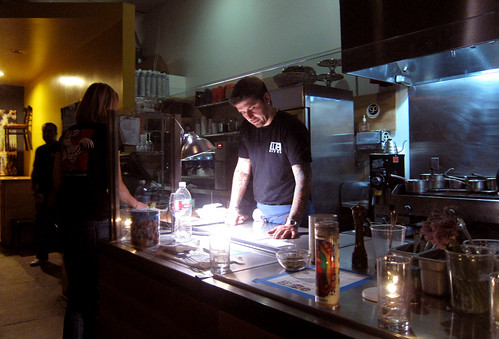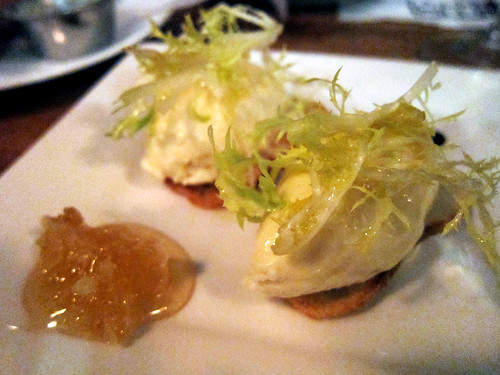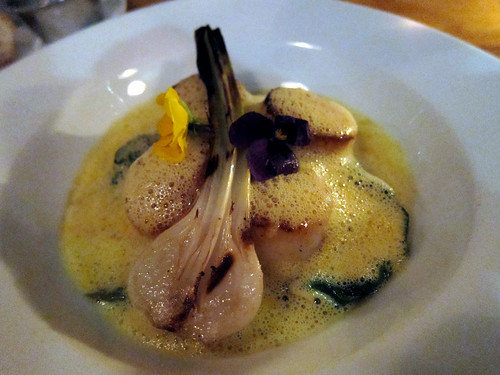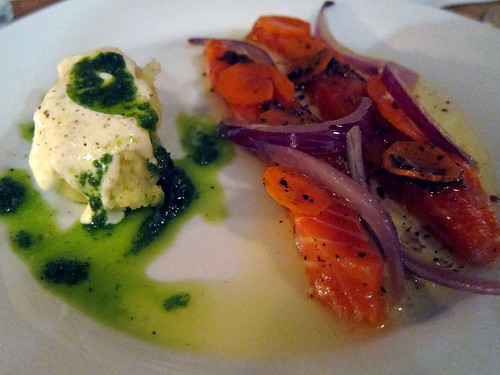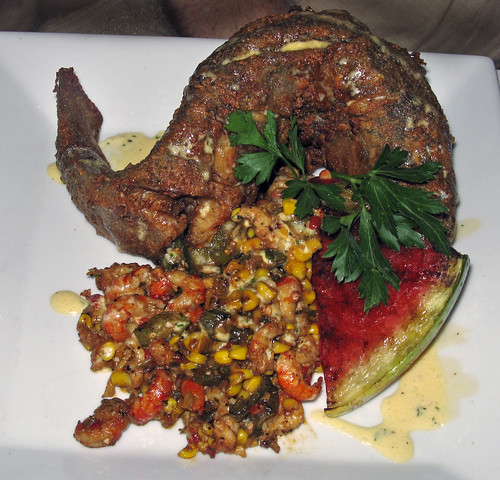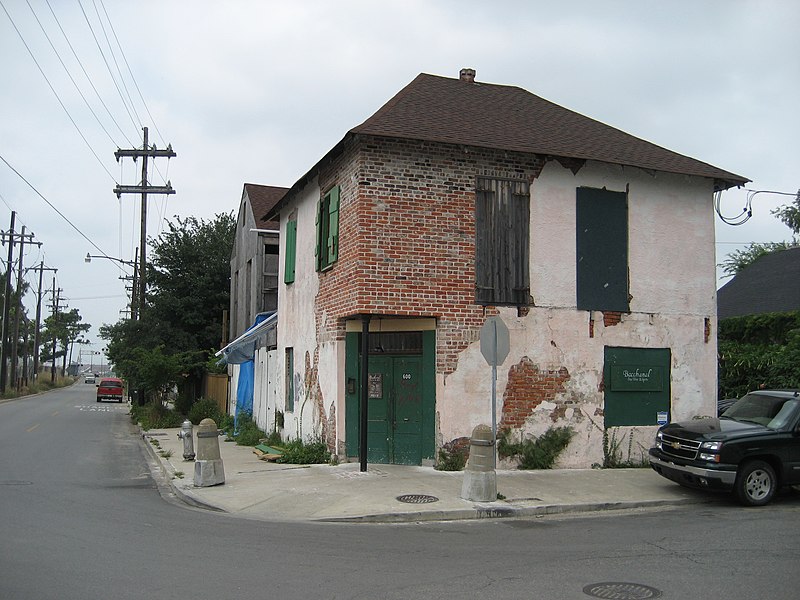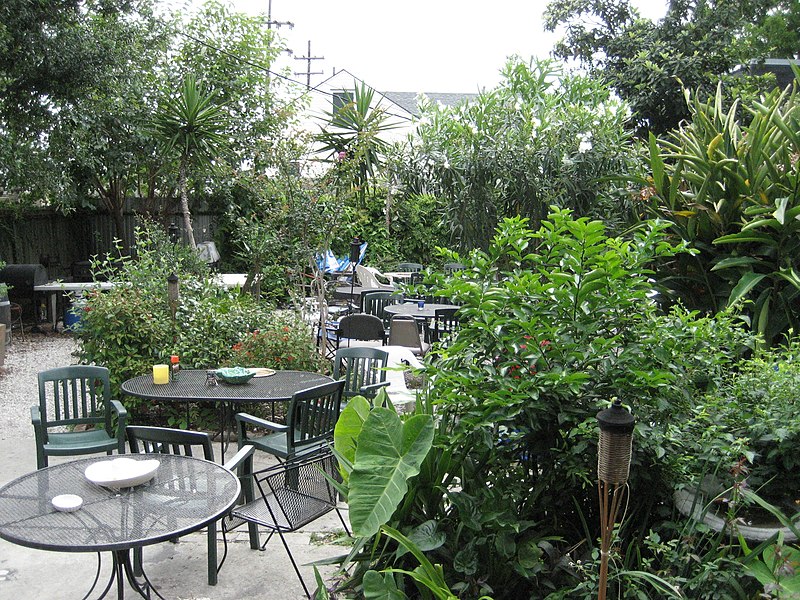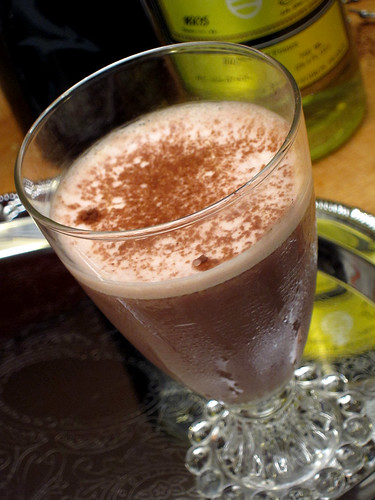An evening with Chef Ludo
The intense and immensely talented French chef Ludovic Lefebvre just finished up the fourth incarnation of his “pop-up” restaurant LudoBites, a few weeks ago. This time it was held from early April ’til May 28 at what’s normally a small, respectable lunch-only spot in downtown Los Angeles, Gram and Papa’s (whose motto, “Slow food, fast” is almost just like that of our beloved Oinkster, which is “Slow fast food”), but during those dates, at night, it became one of the best restaurants in the city.
When LudoBites 4 was announced, apparently reservations for the entire run sold out in 18 hours. Thanks to our friend Noelle grabbing a table for eight on Saturday, May 8 we were able to enjoy Ludo’s food, and for starters I’ll say it’s one of the most extraordinary meals I’ve ever had in this city.
Some people don’t like Chef Ludo. These tend exclusively to be people who’ve never met him, never eaten his food and have only seen him on the TV show “Top Chef Masters,” where his demeanor has been described as “cantankerous.” (What, a chef, cantankerous? No! I don’t believe it!) Remember, folks, that that show is TV, and TV ain’t real, no matter how often the misnomer “reality TV’ is bandied about. These shows are edited to make good TV, so let’s get any perceptions based on a TV show out of the way.
I got to meet him and his fabulous wife Krissy (who runs the front of the house) only very briefly, but Ludo was charming and friendly yet very serious and passionate about food, all of which was reflected in every single plate that came to our table. Krissy was the consummate host, made us all feel very welcome and remembered Wesly from the last LudoBites (which I had to miss, as I was out of town, phoo).
Ludo recently did an interview with the “creative culture blog” yello!, where he talked about his previous versus current clientele:
We have the food trucks now (we have a lot, a lot of food trucks in LA). I think food trucks are amazing. I really love it. A chef like me, I worked all my life in high-end expensive restaurants … and now, to be affordable to everybody is just amazing. Because before, when I was at Bastide or L’Orangerie, there were a lot of customers who couldn’t afford to try my food. And now, it’s just so amazing how I meet different clientele. To be very accessible like this is how I want to be. I want to cook for everybody, not just for rich people. And I don’t need to use caviar every time to do good food. I can really create a menu that’s not very expensive for my customer. I want my customer to be able to come every week. That’s what makes a restaurant. I don’t want to be anymore “the special occasion chef,” when people just come to celebrate their birthdays or anniversaries. No. We need to be accessible.
That, my friends, is someone who understands great food and hospitality. That, my friends, is also what I’d like to aspire to as long as I’m living in this city — eating Ludo’s food every week.
He went on to say, “[W]e have people who come to the restaurant, sit down and tell the waiter, ‘I want to eat the whole menu.’ [He stares, bewildered.] No, it’s crazy. I mean, people come to LudoBites and eat the whole menu.”
Um … ahem.
Okay, here’s the deal. This was our one shot at LudoBites this time. Even though he does tweak the menu a bit during the run, and perhaps a dish drops off and a new one joins in, or it’s made in a slightly different way, this was still more or less it. It wasn’t like we could try a few dishes now and try a few later on; there were no more reservations available (although one of our dining companions managed to get in a couple more times before the end of the run). And everything looked fantastic.
So … the eight of us ordered every single dish on the menu. Two or three servings of each. For the table.
It was kind of like taking off and nuking the entire site from orbit. It was the only way to be sure.
Let us begin.
That Ludo was able to drive me nearly insane with a warm baguette and two things to spread on it is rather telling. The honey-lavender butter was amazing, but the smoked lard … not only did I want a bucket of that stuff to smear on bread and nom nom nom all night long, forsaking all other menu items, but I practically wanted to rub it all over my body. Now that I’ve left you with that disgusting imagery … ’nuff said.
Next, Whipped Brie Chantilly with Honeycomb, Frisée Salad and Balsamic Vinegar. The brie was whipped for a light texture, then had chantilly cream folded into it for an even lighter (but much richer) texture.
Scallop with Spinach, Yogurt-Curry Sauce, Spring Garlic and Violet Flowers. Perfectly cooked scallop, surprisingly mild roasted spring garlic, and the foamy-but-not-foam texture of the sauce was great with the scallop.
Marinated King Salmon, German Butterball Potatoes, Crème Fraîche with Red Wine Vinaigrette. I had to fight off a bit of apprehension due to the fact that salmon had not passed my lips since I got food poisoning from a bad piece of salmon last year. I knew that wasn’t going to happen this time, and dove in. The salmon was divine; fatty and tender and buttery, marinated enough for the flavors to penetrate the fish but not enough to “cook” it into ceviche, with the crisp carrot slices and strips of red onion offering textural contrast. Then those potatoes! The tangy crème fraîche on the potatoes and the vinaigrette on the salmon balanced the richness perfectly. This was terrific; I think my temporary fear of salmon is now gone. And we’re still only getting started …
Next, White Asparagus Velouté with Mozzarella Mousse, Candied Olives, Shaved Fennel and Salmon Roe. If you’re unfamiliar with a velouté, it’s one of the “mother sauces” of French cuisine. In its most basic form it’s a light stock (chicken, veal or fish) thickened with a blond roux (made of butter and flour). The term is derived from the French word “velour,” or “velvety,” and that’s a perfect description of what a sauce velouté or a soup derived from it feels like in your mouth. Here it’s puréed white asparagus, with a creamy cheese mousse, crisp fennel and the delightful little *pop* you get from the salmon roe all providing a wealth of textures as well as flavors. We were starting to get dizzy. Steady, boy …
So as not to kill your browser or mobile reader we’ll continue with the rest of this staggering meal after the break:

